Sea Turtle Conservancy (STC) is hoping all of its supporters will participate in this year’s Giving Tuesday Campaign, which seeks to raise funds for the critical work we are doing as part of our Beachfront Lighting Program in Florida. Giving Tuesday, which occurs the Tuesday after Thanksgiving (December 3 this year), is one day when everyone can join together to make a huge difference!
For Giving Tuesday last year, STC supporters raised $61,000 for STC’s in-water research work in the Gulf of Mexico. STC has set its sights even higher this year, with a goal of raising $62,000 for our Beachfront Lighting Program, which we are confident we can reach thanks to generous pledges from STC’s Board of Directors to match up to $36,000 for every dollar donated.
Sea turtles have crawled onto beaches to nest for millions of years. It was once easy for hatchlings to find the ocean after emerging from nests because the brightest horizon was always the ocean, compared to the darkened dune. Now, Florida’s coasts are lined with beachfront properties that can emit powerful, white light, which can cause sea turtles to crawl toward those lights (misorient) or crawl in circles on the beach (disorient).
After the Deepwater Horizon Oil Spill in 2010, STC has received several grants to retrofit problematic lights with sea turtle friendly alternatives on coastal properties in Florida. STC partners directly with coastal property representatives to manage each lighting retrofit project to completion. Since 2010, STC has worked to eliminate problem beachfront lighting and sea turtle disorientations in Florida, retrofitting lights on nearly 350 beachfront properties and darkening more than 46 miles of beach by retrofitting thousands of bulbs and fixtures.

STC is deeply appreciative of all the support received from various foundations for this project. Our current project needs include funding to: host educational workshops, work with local governments in Florida to improve their management strategies for beachfront lighting, and respond to requests from other states and countries to utilize and learn from our 15 years of lighting experience.
We are hopeful that STC’s members will support the program this Giving Tuesday, when all donations will be matched 1:1 by the STC Board of Directors. With your support, STC will continue darkening beaches to make them safe for sea turtles, while also educating the public and important stakeholders on the importance of wildlife-friendly lighting.
Help support STC’s Giving Tuesday Fundraiser by donating:
Introducing the winning photos from our 2025 Sea Turtle Calendar Contest! Thank you so much to everyone who entered this year’s contest. It gets harder every year to narrow down hundreds of beautiful images to only 13 photos! Calendars will be for sale in our online gift shop in late November or early December. We will post the link once they’re live!


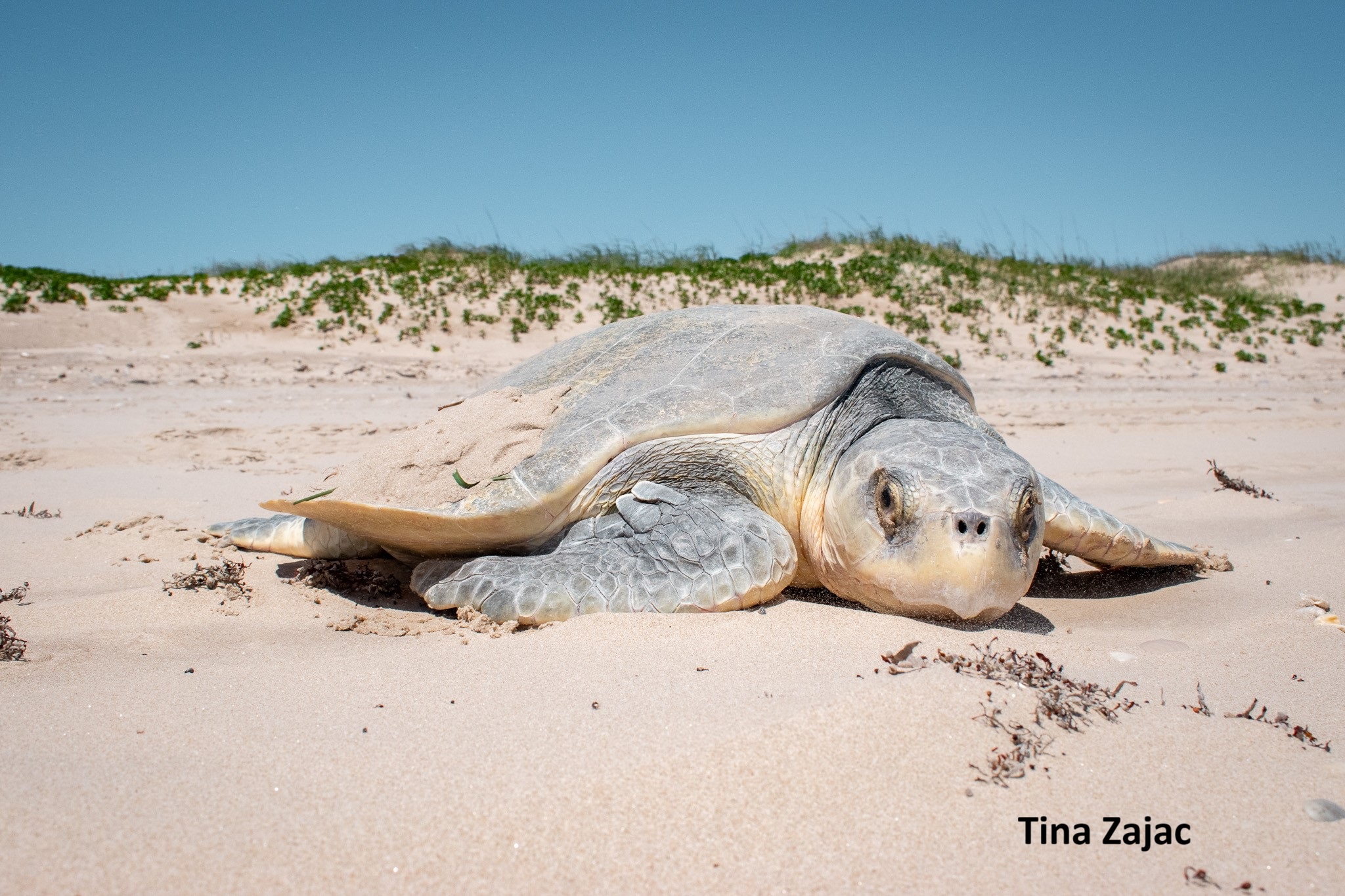





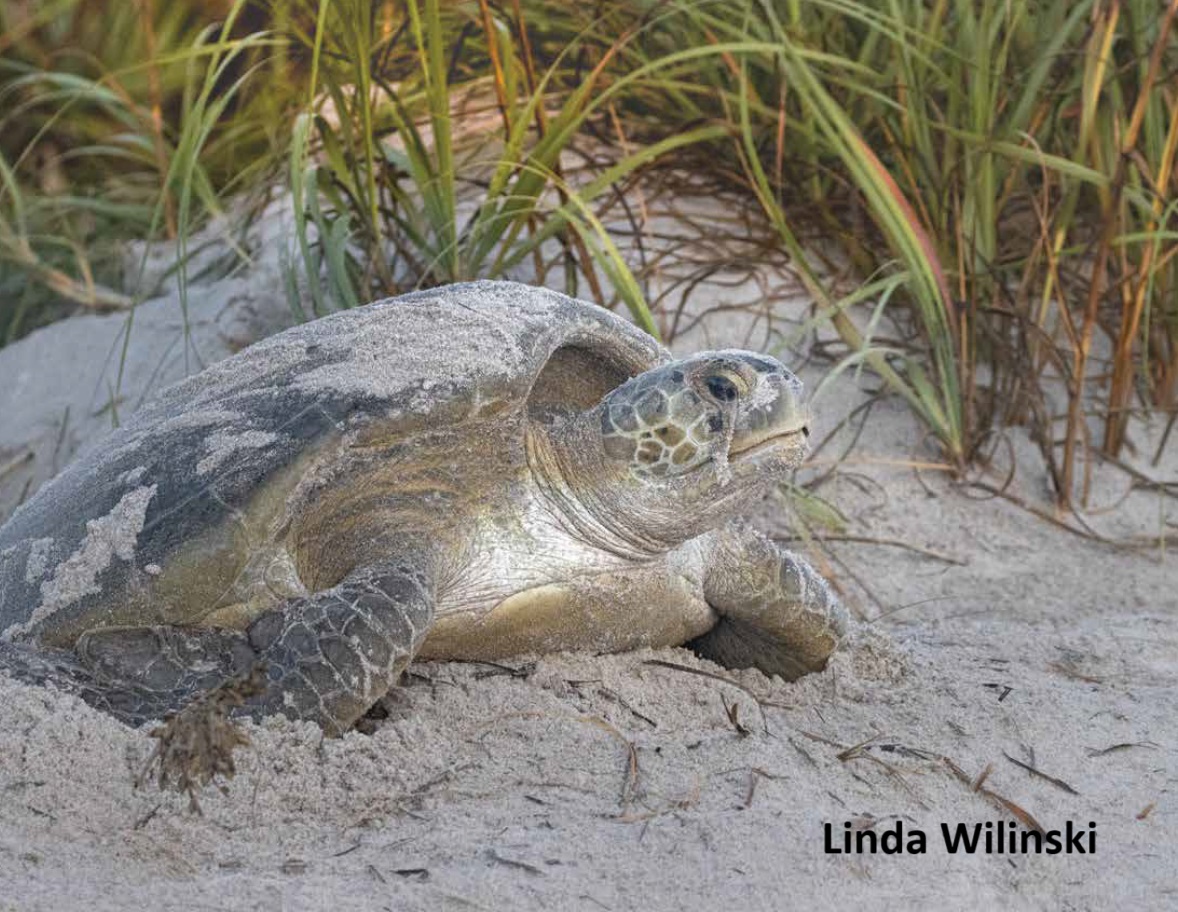




Sea Turtle Conservancy (STC) is an international nonprofit 501(c)3 organization based in Gainesville, Florida and was founded by renowned sea turtle expert Dr. Archie Carr. STC is the oldest and one of the most accomplished sea turtle conservation organizations in the world. STC is hiring a Staff Accountant to assist the STC Controller in managing and accounting for projects in the US, Costa Rica, Panama, and wider Caribbean.
This position is full time, physically based in our Gainesville, Florida office. Accounting tasks will be many and varied, under the direct supervision of the Controller. They will include:
Applications will be accepted until a candidate is selected. Apply by submitting your cover letter and resume to the Senior Accountant at erin@conserveturtles.org.
Funded by a portion of revenues from Florida’s Sea Turtle Specialty License Plate, the Sea Turtle Grants Program distributes funds each year to support sea turtle research, conservation and education programs that benefit Florida sea turtles. In 2024, Sea Turtle Conservancy (STC) had two grants funded, Addressing Barriers to Lighting Compliance Through Targeted Outreach and Inspiring Sea Turtle Conservancy Action Ambassadors.
Addressing Barriers to Lighting Compliance Through Targeted Outreach
 Poorly managed coastal lighting is a leading threat to Florida’s sea turtles. For decades, numerous programs offered by scientists, government agencies, and non-profit organizations have been in place to reduce problematic lighting on Florida’s beaches. However, there is widespread agreement among stakeholders in Florida that more needs to be done to address two barriers to reducing problematic lighting: the inaccessibility of wildlife friendly products and the need to distribute sea turtle conservation messaging through coastal real estate agents. As it stands now, it is largely impossible for a coastal property representative to walk into a home improvement store and purchase wildlife friendly fixtures and lamps; they must be ordered through a lighting distributor that has existing relationships with manufacturers of wildlife friendly lighting. In addition, as more people move to Florida’s coast from out of state, it is crucial that new residents are aware of how to protect the natural resources they are inheriting; one way to reach this audience is by providing educational materials to real estate agents that sell beachfront properties and interact directly with this important audience. Over the past few years, Sea Turtle Conservancy (STC) has begun to address lighting issues with targeted education and outreach. Through this project, STC will refine its home improvement store initiative, and provide the ability to expand STC’s outreach efforts and break down two important barriers to reducing sea turtle disorientations on important sea turtle nesting beaches.
Poorly managed coastal lighting is a leading threat to Florida’s sea turtles. For decades, numerous programs offered by scientists, government agencies, and non-profit organizations have been in place to reduce problematic lighting on Florida’s beaches. However, there is widespread agreement among stakeholders in Florida that more needs to be done to address two barriers to reducing problematic lighting: the inaccessibility of wildlife friendly products and the need to distribute sea turtle conservation messaging through coastal real estate agents. As it stands now, it is largely impossible for a coastal property representative to walk into a home improvement store and purchase wildlife friendly fixtures and lamps; they must be ordered through a lighting distributor that has existing relationships with manufacturers of wildlife friendly lighting. In addition, as more people move to Florida’s coast from out of state, it is crucial that new residents are aware of how to protect the natural resources they are inheriting; one way to reach this audience is by providing educational materials to real estate agents that sell beachfront properties and interact directly with this important audience. Over the past few years, Sea Turtle Conservancy (STC) has begun to address lighting issues with targeted education and outreach. Through this project, STC will refine its home improvement store initiative, and provide the ability to expand STC’s outreach efforts and break down two important barriers to reducing sea turtle disorientations on important sea turtle nesting beaches.
Inspiring Sea Turtle Conservancy Action Ambassadors
The Barrier Island Sanctuary Management and Education Center (BIC) has a responsibility to train the next generation of stewards of sea turtles and their critical nesting habitat. Sea Turtle Academy (STA) field study education programs have reached up to 3,300 students in both Brevard and Indian River Counties with support from the Sea Turtle Grants Program to provide bus scholarships and with funding for a Sea Turtle Educator. Most of these programs reach K-4 students. To broaden the age range of our audience, in 2019, STC also built the Sea Turtle TECH STEM Program to reach middle school and teen audiences during the summer. These programs show strong learning outcomes and pro-sea turtles attitude and conservation behavior shifts. However, the BIC still needs a teen program during the school year. This project will fund a Community Stewardship Coordinator and a college intern to support the STA education program, other sea turtle outreach programs, and the new STCAA program to reach students in the 11-18 year old age range during the school year. With a new Sea Turtle Conservancy Action Ambassador Program, based on the Community Action Projects for the Environment model produced by UF IFAS, we will train teens in the steps needed to succeed in collaborative projects that create systemic change. These projects may be citizen science, advocacy or stewardship oriented and will address threats to sea turtles and their habitats. These programs build the future stewards of the Archie Carr National Wildlife Refuge by training the next generation in the skills needed to conserve sea turtles and their habitats.
 Both projects are funded in whole by a grant awarded from the Sea Turtle Grants Program. The Sea Turtle Grants Program is funded from proceeds from the sale of the Florida Sea Turtle License Plate. Learn more at www.helpingseaturtles.org.
Both projects are funded in whole by a grant awarded from the Sea Turtle Grants Program. The Sea Turtle Grants Program is funded from proceeds from the sale of the Florida Sea Turtle License Plate. Learn more at www.helpingseaturtles.org.

Release dates and information are subject to change. Please check back as we get closer to the event dates! All events listed below are FREE and open to the public. No registration needed!
Loggerhead Turtle Release on Anna Maria Island
Date: June 24 or 25 (release date dependent on turtle nesting)
Location: Anna Maria Island, FL
Release Time: 8:30 am EST
More info on our Facebook Event Page Here!
Green Turtle Releases in Tortuguero, Costa Rica
Date: July 14 & 15
Location: STC Field Station, Tortuguero, Costa Rica
Release Time: 9:00 am CST (local time)
Hawksbill Turtle Releases with The Four Seasons Resort Nevis
Date: July 21, 22
Location: Pinney’s Beach, Nevis
Time: 9:00 am AST (local time)
Loggerhead Turtle Release in the Archie Carr Refuge
Date: Sunday, July 28
Location: Barrier Island Center, 8385 S Hwy A1A, Melbourne Beach, FL 32951
Release Time: 8:30 am EST (arrive by 7:30 am)
Rehab Turtle Release with The Turtle Hospital
Date: Friday, August 2
Location: Sombrero Beach, The Florida Keys
Time: 9:30 am EST
Questions about any of the Tour de Turtles events? Email lexie@conserveturtles.org
Make sure you subscribe to our E-Newsletter below or follow us on Facebook, Instagram and Twitter to receive updated information regarding turtle releases.
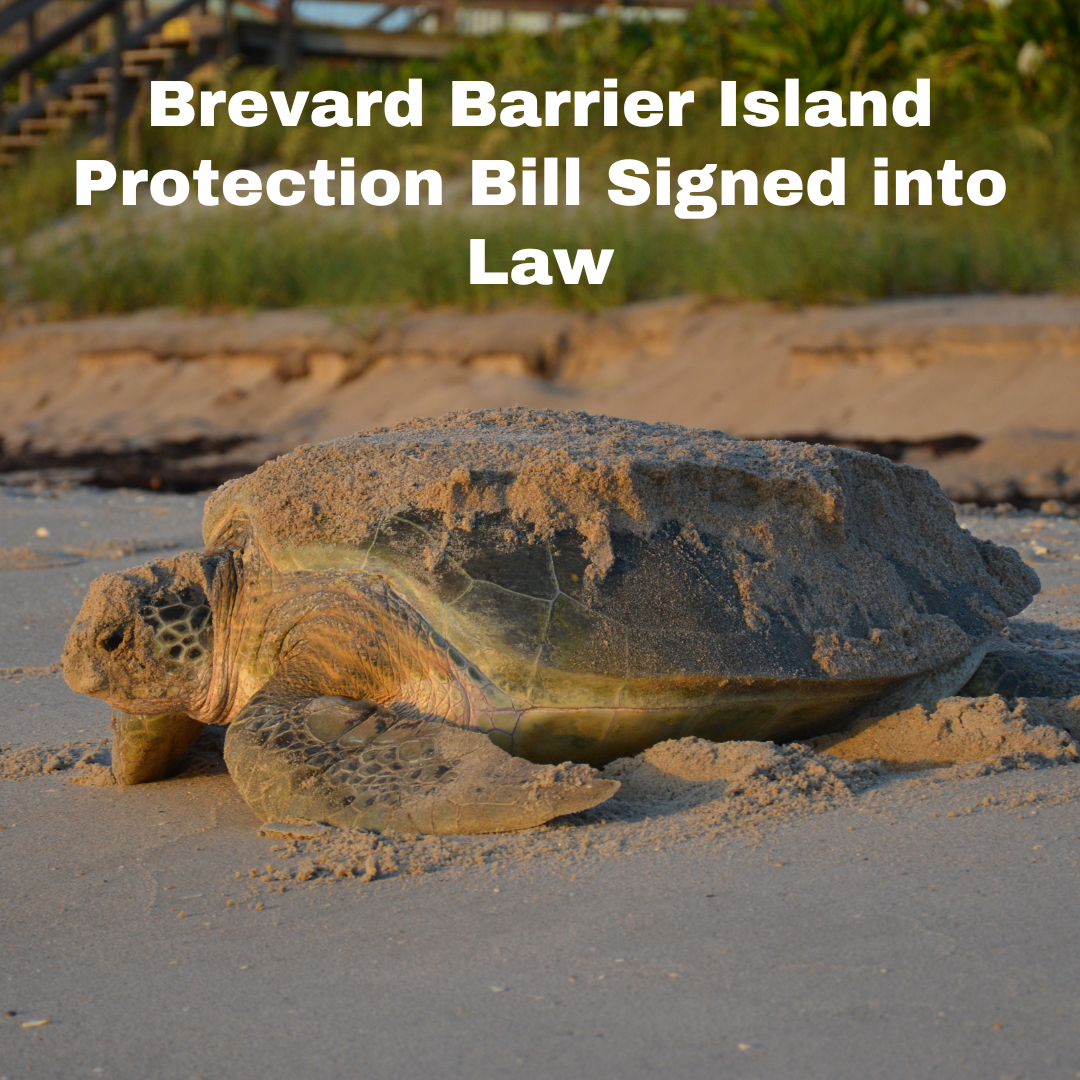 We are thrilled to announce that Florida House Bill 1489, a bill designating the southern area of Brevard County as an Area of Critical State Concern, was signed into law by the Governor yesterday!
We are thrilled to announce that Florida House Bill 1489, a bill designating the southern area of Brevard County as an Area of Critical State Concern, was signed into law by the Governor yesterday!
Brevard County’s south beaches join only five other areas in Florida with this designation, including the Florida Keys, Key West, Big Cypress, the Green Swamp and the Apalachicola Bay area.
This new protection area contains the entirety of the Archie Carr National Wildlife Refuge, a 20.5-mile section of shoreline between Melbourne Beach and Wabasso Beach – the most important sea turtle nesting beach in the United States. It also contains the Indian River Lagoon, an important estuary, recreational fishery, and developmental habitat for sea turtles.
The law requires state, regional, and local government agencies to prevent the adverse impacts of development on resources critical to sea turtle habitat. This includes prohibiting new shoreline hard armoring, reducing nutrient pollution to improve water quality, supporting nature-based solutions to restore habitat, ensuring that development is compatible with the barrier island’s natural resources, and more. Read the full language here.
After learning about efforts to increase development density on Brevard’s South Beaches earlier this year, Sea Turtle Conservancy worked with Barrier Island Protection and Preservation Association (BIPPA), 1000 Friends of Florida, and Brevard County legislators to help draft and advocate for this legislation. At every committee stop, including the full House and Senate, the bill passed unanimously. We believe this was due to the overwhelming feedback legislators received from community members and supporters about the bill.
We thank Representative Thad Altman and Senator Tom Wright for filing this legislation, as well as their staff aides who helped usher the legislation through the process. The bills had strong support from the entire Brevard County legislative delegation. We are also grateful to our conservation partners, legislators, local community members, and our dedicated supporters who helped contribute to this victory for sea turtles!

The Sea Turtle Grants Program (STGP), funded by the sale of Florida’s “Helping Sea Turtles Survive” specialty license plate, recently awarded $490,892.07 to 30 different projects benefiting Florida sea turtles as part of the 2023-2024 grant funding cycle. Since it’s inception, the Sea Turtle License Plate Grants Program has awarded more than $7 million to conservation projects.
Each year, the Sea Turtle Grants Program distributes money to coastal county governments, educational and research institutions and nonprofit groups through a competitive application process. The sea turtle specialty license plate is also the primary source of funding for the Florida Fish and Wildlife Conservation Commission’s Marine Turtle Protection Program.
The following organizations received grants for their approved projects for the 2023-2024 cycle:
A major threat to sea turtles is the ingestion of or entanglement with marine debris, including single-use balloons. Although many Floridians participate in balloon releases as part of a celebration or to honor a loved one, once balloons are released, they can travel thousands of miles before landing. When a balloon bursts and lands in the ocean, sea turtles and other marine wildlife often consume it because of its resemblance to jellyfish. Sea turtles are unable to regurgitate, so once the balloon enters the digestive tract, it can cause an impaction that can lead to death.

The ribbon attached to balloons also wraps around the flippers or necks of sea turtles, inhibiting breathing, eating or swimming. People who monitor sea turtle nesting around Florida report seeing balloons on nesting beaches on an almost-daily basis. Sea turtle rehabilitation facilities in Florida spend hours removing balloon material and other plastic debris from stranded sea turtles. The Florida Fish and Wildlife Conservation Commission has numerous records of sea turtle deaths associated with balloons.
We are encouraged to see the filing of H.B. 91 – Release of Balloons, which would close a loophole allowing countless balloons to enter our waterways and kill marine life, including sea turtles. Currently, Florida Statute 379.233 prohibits the release of ten or more balloons per day, but makes an exception for “biodegradable” balloons, which is not scientifically sound. By removing these two loopholes, as read in H.B. 91, Florida can drastically reduce plastic debris in the marine environment and save countless marine animals.
All species of sea turtles found in Florida’s coastal and nearshore habitats are listed as either “threatened” or “endangered” under the U.S. Endangered Species Act, meaning that they are at risk of extinction. A number of man-made threats, including coastal development, light pollution, boat strikes, commercial fishing interactions, and plastic pollution are contributing to their decline. While reducing plastic pollution in the ocean as a whole will require systemic change, stopping intentional balloon releases and their debris in the marine environment is achievable through laws such as H.B. 91. By supporting the balloon release ban in Florida in 2023, you can directly improve sea turtle nesting and foraging habitat.

The 2023 Legislative Session begins on March 7 and ends on May 5. To support this legislation, STC encourages Floridians and all sea turtle enthusiasts to contact state House Representatives and Senators and ask them to support H.B. 91, the intentional balloon release ban, when it is scheduled in their committees and up for consideration on the House and Senate floor. While emailing is helpful, directly calling legislators at their district or Tallahassee offices and speaking with their staff is especially impactful. If you are unsure who your legislators are, follow the links below.
Find your Florida Senator: https://www.flsenate.gov/senators/find
Find your Florida House Representative: https://www.myfloridahouse.gov/findyourrepresentative
**NOTE: To purchase tracking bracelets from our official charity partners, please click this link or check out the companies listed on our Partners page here: https://conserveturtles.org/partners**
SCAM ALERT! Companies operating under a variety of names are advertising on Facebook, selling products online, and illegally using STC’s turtle tracking maps as a perk to buyers. If you have been offered an STC tracked turtle by purchasing something from Bela Wonder, Ocean Project.co (not to be confused with ‘The Ocean Project‘), Turtle’s Journey, Wildlife Team, Wildlife Mission, or Ocean Better, they have used Sea Turtle Conservancy’s turtle tracking information without our permission. Don’t be duped or support the scammers!
If you have been scammed, please do NOT email or call STC if you haven’t received your order or if you have questions about your turtle. Unfortunately there is nothing we can do. The greatest inconvenience to STC (aside from having our copyrighted information stolen) is the valuable staff time that is being wasted responding to people’s complaints rather than actually working to protect sea turtles. Instead, we encourage you to report the activity of these companies to the Better Business Bureau, Shopify, and Facebook (contact information below).
How to report scam companies:
File a complaint with the Better Business Bureau: https://www.bbb.org/consumer-complaints/file-a-complaint/get-started
Report online shops to Shopify: https://help.shopify.com/en/questions#/contact/email
Report pages to Facebook: https://www.facebook.com/help/355811251195044
If you ever question the legitimacy of a company who claims to partner with STC, we encourage you to reference the PARTNERS page on our website, which we update regularly.
|
Join STC on an exclusive, guided journey August 3-10, 2023 to experience the warmth of tropical beaches and rainforests in Costa Rica while we explore the wonders of sea turtles. During this short and immersive trip we will spend a few nights working hands-on with green turtles in Tortuguero – nesting site of the largest green turtle colony in the Atlantic and the literal birthplace of sea turtle conservation. You will be guided by world-renowned sea turtle biologist and STC Scientific Director, Dr. Roldán Valverde, a Costa Rican native, who will give presentations on sea turtle research and conservation, as well as rainforest ecology, biodiversity and local “Tico” culture.
This trip will also include a visit to the Arenal volcano, where you will enjoy natural hot springs and other natural attractions around this active volcano region. Click here to see more details and register for the trip through our travel partner, Holbrook Travel.
Highlights
Click here for the FULL ITINERARY!Cost: $3,540 (not including airfare) |
Each year for Giving Tuesday (the Tuesday after Thanksgiving), Sea Turtle Conservancy (STC) targets one of its most pressing sea turtle protection projects as the focus for this annual charitable event. The campaign starts with a pledge from STC’s Board of Directors to match the individual donations provided by STC members and supporters, up to a certain amount. This year’s challenge match from the Board will be $35,000, which means our Giving Tuesday fundraising goal is $70,000 or more.
All funds donated for this year’s Giving Tuesday will be directed toward STC’s turtle research and protection efforts in Tortuguero, Costa Rica—the birthplace of sea turtle conservation. STC’s work in Tortuguero began back in the 1950s, making it the longest-continuous turtle conservation project in the world. Many of the turtle monitoring and protection efforts developed at Tortuguero are used today by sea turtle conservationists around the globe. In fact, many of the world’s leading sea turtle scientists and project leaders got their start as STC Research Assistants in Tortuguero. Most importantly, as a result of STC’s efforts over the last six decades, the green turtle colony that nests at Tortuguero recovered from near the brink of extinction to being one of the two largest green turtle populations in the world.
With all the history and success of this project, STC is concerned knowing that the gains made on behalf of Tortuguero’s green turtles could be in jeopardy for reasons that are poorly understood. Our strategy of systematically reducing threats to sea turtles both on the nesting beach and at sea produced measurable results over the decades. Beginning in the late 1970s, approximately 25 years after conservation efforts started at Tortuguero, the green turtle population began increasing in size. The timing was not a coincidence. Green turtles take at least that long to reach maturity—meaning hatchlings that were protected and released in the 1950s should have started returning to Tortuguero as adults to nest by the end of the 70s. That’s exactly what our data indicates happened.
From the 1960s up to 2012, the number of green turtle nests deposited in Tortuguero grew by over 600%. During high nesting years, it was common to document well over 150,000 nests in a season. The establishment of Tortuguero National Park, the elimination of global sea turtle trade, the banning of turtle and egg consumption at Tortuguero, and the development of sea turtle eco-tourism as an alternative livelihood for the local community all had positive impacts—proving that sea turtle conservation efforts developed by STC worked. Tortuguero green turtles were on the path to full recovery.

But something unexpected began to happen over the next decade. Starting in 2013, we began documenting a declining trend in nesting. It wasn’t a dramatic drop. In fact, given the phenomenal growth of the population prior to this time period, STC was not particularly worried about a few “down” years of nesting. The factors that cause annual turtle nesting numbers on any beach to ebb and flow still are not well understood. However, our cautious observation of the nesting trend turned into real worry in 2021, when after several down nesting seasons, the number of nests dropped to the lowest level in 25 years (about 40,000 nests for the entire season). This is still a lot of green turtle nests, and it reaffirms Tortuguero’s global importance for this species. Nevertheless, it sparked worry knowing that a little over ten years ago the number of nests hit 180,000 during a single season.
While our preliminary analysis of the 2022 nesting season indicates an encouraging uptick in nesting, the trend over the last decade still has us concerned that something unusual is happening. And that’s bad news for green turtles throughout the Caribbean and Atlantic. With funding raised through this year’s Giving Tuesday campaign, STC will launch important new studies and conservation efforts to help identify and address the threats that have caused the population decline. There probably is not a single “smoking gun.” Rather, it’s more likely that the collective impact of several threats is affecting the population. Our work will focus on identifying new marine foraging sites used by green turtles where they may be experiencing previously-undocumented hunting pressure. We also will work more strategically with the community and natural resource agencies in Tortuguero to curtail illegal hunting of turtles and eggs, which increased dramatically during the pandemic and still remains at an elevated level. It is entirely possible that unforeseen factors related to climate change could be impacting turtle reproduction, so this is another area where our focus will turn.
STC has proven that it has the skill, dedication and tenacity to ensure the long-term survival of sea turtles. We will not allow our decades of success on behalf of sea turtles at Tortuguero to be undone, but we need your help. Please consider making a special donation for this year’s Giving Tuesday (donations will be accepted for this purpose through the end of the year).
Help support STC’s Giving Tuesday Fundraiser by donating in one of three ways:
1. Online at www.conserveturtles.org/GivingTuesday or facebook.com/conserveturtles
2. Call 352-373-6441 with your credit card info
3. Mail a check with “Giving Tuesday” in the subject line. All checks received with “Giving Tuesday” in the subject line will count towards the campaign if received by December 31st.
Research and monitoring of sea turtles in Tortuguero, Costa Rica was initiated in the 1950´s by legendary sea turtle researcher Dr Archie Carr. Dr Carr continued his work in Tortuguero until his passing away in 1987 and the Sea Turtle Conservancy continues to conduct annual programs at the site, making it the longest ongoing sea turtle conservation and monitoring program in the world.
Although there are no strict requirements, good knowledge of English and Spanish, education in biology or related fields, previous fieldwork experience in the tropics, experience working/living in multicultural environments, experience working/living in isolated locations for extended periods, previous experience in environmental education and availability for the entire period of the program greatly improve your chances of being selected for a position.
STC Alumni RAs have gone on to work for conservation organizations, universities and government agencies worldwide.
Applications for RA positions must include the following materials:
1. Application Form for the Leatherback or Green Turtle Program (download below);
2. A cover letter explaining why you are interested in the Research Assistant position, details of any relevant experiences and a statement of your level of proficiency in English and Spanish (either a formal qualification or an indication of your written/oral comprehension);
3. A CV or resume with pertinent information; and
4. Name and email contact of three professional references.
Completed materials should be emailed to Dr. Roldan Valverde at roldan@conserveturtles.org
All application materials must be received at our office before or on the deadline listed for each program. Short-listed candidates will be contacted within four weeks of the application deadline. Please do not phone or e-mail to inquire about the status of your application.
Applicants that do not supply all requested materials will not be considered.
Project description: Conservation and monitoring of critically endangered leatherback turtles
Location: STC Field Station, Tortuguero, Costa Rica
Dates:
Group 1: April 1 – May 10, 2023
Group 2: May 6 – June 30, 2023
Application Deadline: January 15, 2023
Project summary:
Research and monitoring of sea turtles in Tortuguero, Costa Rica was initiated in the 1950´s by legendary sea turtle researcher Dr Archie Carr. Dr Carr continued his work in Tortuguero until his passing away in 1987 and the Sea Turtle Conservancy (STC) still continues the project making it the longest ongoing sea turtle conservation and monitoring program in the world. In 1995, the STC began the Leatherback Program to study the area’s little known Leatherbacks (Dermochelys coriacea). Each year from March – June the STC research team collects information about this vulnerable species. STC works closely with Costa Rican authorities, the Tortuguero community and other leatherback nesting beach monitoring groups. Information collected during the annual Leatherback Program plays a key role in developing effective management strategies for sea turtles in the area.
Work description:
Two research assistants (RAs) will be trained in sea turtle monitoring techniques by, and work under the supervision of, the STC Field Research Coordinator. The RA team will be made up of individuals from several countries from around the world, with an emphasis on Latin America and the Caribbean. Emphasis of the work conducted by RAs will be placed on increasing hatchling production. As such, the RAs main responsibilities will include nest translocation, monitoring and excavation. Track surveys will also be conducted to assess nesting activity.
Leatherback monitoring is carried out along 8 km (=5 miles) of nesting beach. Work activities include conducting morning surveys walking on soft sand and excellent physical condition is a requirement for the RA positions. RAs should expect to work from very early morning hours translocating nests to safe sites.
In addition to monitoring work, RAs are also responsible for working with the STC Education and Outreach Coordinator to develop and participate in various educational and awareness activities in the community of Tortuguero, and be required to assist in the STC Visitor Center to provide information about the work of STC to members of the public.
Leatherback Turtle RA Application 
Leatherback Turtle RA Application (Word doc)
Project description: Conservation and monitoring of critically endangered green turtles
Location: STC Field Station, Tortuguero, Costa Rica
Dates:
Group 1: June 7 – August 20, 2023
Group 2: August 14 – November 1, 2023
These are hard dates and will not be changed. Please do not apply if your availability does not match dates for either group.
Application Deadline: March 13, 2023
Project summary:
Research and monitoring of sea turtles in Tortuguero, Costa Rica was initiated in the 1950´s by legendary sea turtle researcher Dr Archie Carr. Dr Carr continued his work in Tortuguero until his passing away in 1987 and each year from June – November Sea Turtle Conservancy (STC) conducts the Green Turtle Program, continuing the work started by Dr Carr. STC works closely with Costa Rican authorities, the Tortuguero community and other sea turtle conservation organizations in the country. Information collected during the annual Green Turtle Program plays a key role in developing effective management strategies for sea turtles in the area.
Work description:
A total of 16 research assistants (RAs) will be trained in sea turtle monitoring techniques by, and work under the supervision of, the STC Field Coordinators. The season is divided into two time periods, June – August and August – November, with eight RAs in each time period. The RA team will be made up of individuals from several countries from around the world, with emphasis on Latin America and the Caribbean. The primary responsibilities of the RAs will include nightly tagging patrols, morning track surveys, nest monitoring and excavation. RAs are responsible for tagging nesting turtles, collecting biometric data from females, recording nesting activity during track surveys, and other pertinent data collection.
Monitoring activities during the Green Turtle Program are carried out along 8 km (5 miles) of nesting beach. RAs can expect to work very long hours, throughout the day and night, often with little sleep. Beach patrols require walking many kilometers in extremely soft sand and in very extreme weather conditions; therefore an excellent physical condition is a requirement for the RA positions.
RAs are also involved in training short-term paying volunteers in all aspects of the monitoring protocol and supervising volunteer groups during beach patrols. The RAs will also be required to develop and participate in various environmental awareness and educational activities with members of the Tortuguero community, and to assist in the STC Visitor Center to provide information about the work of STC to members of the public.
Green Turtle RA Application 
Green Turtle RA Application (Word doc)
Introducing the winning photos from our 2023 Sea Turtle Calendar Contest! Thank you so much to everyone who entered this year’s contest. It gets harder every year to narrow down hundreds of beautiful images to only 13 photos! Calendars will be for sale in our online gift shop in late November or early December. We will post the link once they’re live!



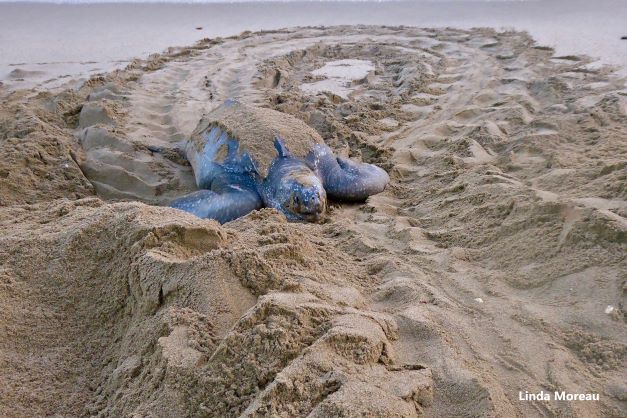


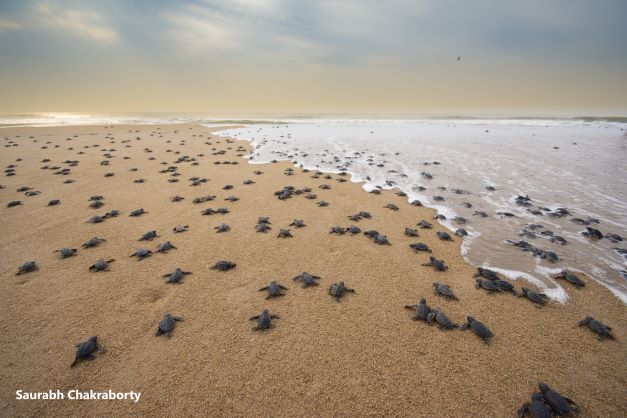
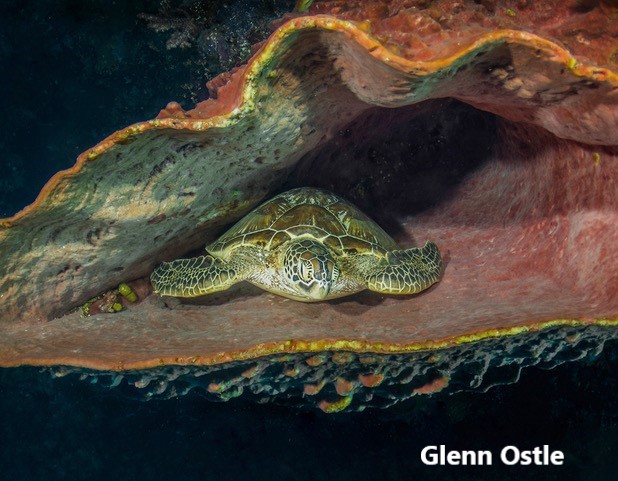

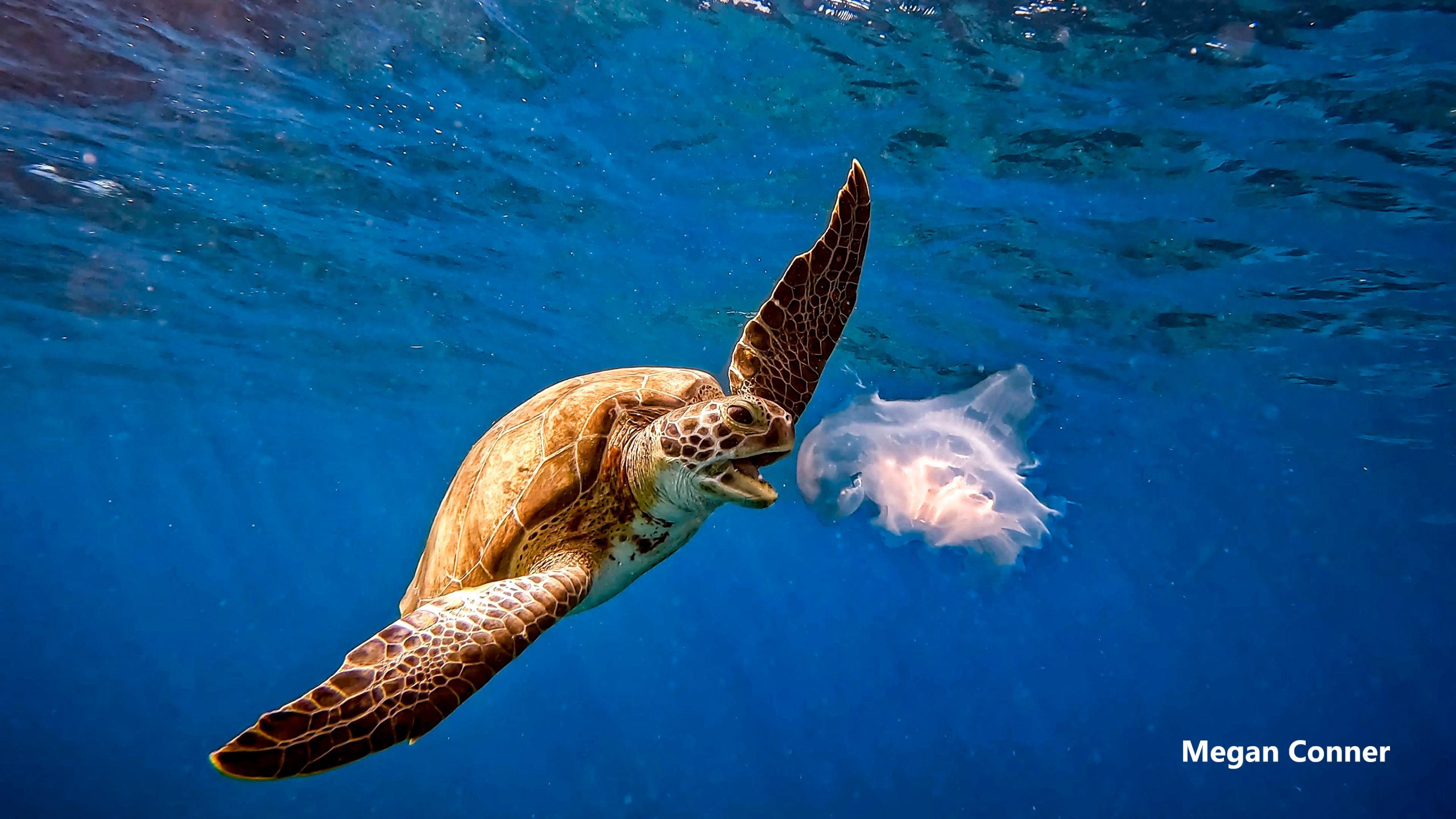
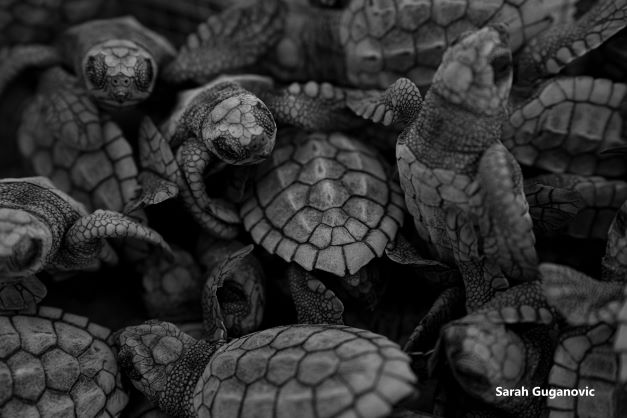


January 18 – February 15, 2023
Instructors: Sarah Rhodes-Ondi, Sea Turtle Conservancy and Amanda Thompson, The Nature Conservancy
 Are you a nature guide, conservation professional or volunteer interested in honing interpretive communication skills? The Sea Turtle Conservancy at the Archie Carr Refuge, in partnership with the National Association for Interpretation (NAI) and The Nature Conservancy, is offering a Virtual Certified Interpretive Guide Course Jan. 18th thru Feb. 15th. Attendance at 8 online classes is necessary for certification.
Are you a nature guide, conservation professional or volunteer interested in honing interpretive communication skills? The Sea Turtle Conservancy at the Archie Carr Refuge, in partnership with the National Association for Interpretation (NAI) and The Nature Conservancy, is offering a Virtual Certified Interpretive Guide Course Jan. 18th thru Feb. 15th. Attendance at 8 online classes is necessary for certification.For more information and to register for the course, click here!

The Lisa Jo Randgaard Fund
Unrestricted endowment funding to meet the complex challenges of a changing world
Written by Linda Randgaard Antonioli (Lisa’s sister)
***********************************************************************************************
This year marks a decade since we lost Lisa, and she remains at the heart of all we do for the Sea Turtle Conservancy (STC).
 Lisa came into the world in Naperville, IL, on August 17, 1968. A serious heart condition, later diagnosed as severe tetralogy of fallot, necessitated her immediate transfer to Children’s Memorial Hospital (now Lurie Children’s) in downtown Chicago. The Democratic Convention began there nine days later, and chaotic demonstrations erupted on the streets. Mom recalled vividly the smell of tear gas and protestors pounding on the car as she drove to get to Lisa’s bedside. It was a most colorful start for our brave sister, our family’s youngest.
Lisa came into the world in Naperville, IL, on August 17, 1968. A serious heart condition, later diagnosed as severe tetralogy of fallot, necessitated her immediate transfer to Children’s Memorial Hospital (now Lurie Children’s) in downtown Chicago. The Democratic Convention began there nine days later, and chaotic demonstrations erupted on the streets. Mom recalled vividly the smell of tear gas and protestors pounding on the car as she drove to get to Lisa’s bedside. It was a most colorful start for our brave sister, our family’s youngest.
 The challenges of living with a chronic pediatric disease so rare that adult medicine was ill-equipped to treat it required Lisa to receive care and surgical support from pediatric physicians throughout her lifetime. Florida’s climate was far gentler on Lisa’s health than Minnesota, where we grew up; she moved to Ft. Lauderdale in the 1990s and ultimately relocated to Ft. Myers, where she put down roots. There, Lisa became acquainted with STC, and a passion for sea turtles began. It brought her great joy to support STC, and to track sea turtles online through Tour de Turtles events. Even as her health started to decline, Lisa’s beautiful soul, sharp wit, humble nature, adventurous spirit, great love for animals, and generous heart never dimmed.
The challenges of living with a chronic pediatric disease so rare that adult medicine was ill-equipped to treat it required Lisa to receive care and surgical support from pediatric physicians throughout her lifetime. Florida’s climate was far gentler on Lisa’s health than Minnesota, where we grew up; she moved to Ft. Lauderdale in the 1990s and ultimately relocated to Ft. Myers, where she put down roots. There, Lisa became acquainted with STC, and a passion for sea turtles began. It brought her great joy to support STC, and to track sea turtles online through Tour de Turtles events. Even as her health started to decline, Lisa’s beautiful soul, sharp wit, humble nature, adventurous spirit, great love for animals, and generous heart never dimmed.
With the support of Executive Director David Godfrey, the Lisa Jo Randgaard Fund was established by her family after Lisa’s sudden passing from complications of her disease at the age of 43 on May 2, 2012. This is the first endowment fund created by donors, which, we know, would make Lisa very proud. There are many kind and generous people in the STC Community that support our fundraising and each of them has our enduring gratitude.

Linda, Tom, Jenny, Diane, Jerry, & Kenny
As we mentioned, this year marks a decade since we lost Lisa, and she remains at the heart of all we do for STC. Some of our achievements over the last decade include:

 Since 2015, fundraising centers on Flippery When Wet artisan soaps, Diane’s handmade sea-turtle stamped bars. To date, 2,411 soaps have shipped to 31 states and two Canadian provinces. To learn more and to order, please visit LoveIntoSustainedAction.com.
Since 2015, fundraising centers on Flippery When Wet artisan soaps, Diane’s handmade sea-turtle stamped bars. To date, 2,411 soaps have shipped to 31 states and two Canadian provinces. To learn more and to order, please visit LoveIntoSustainedAction.com.